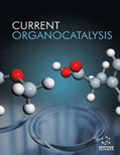Current Organocatalysis - Volume 11, Issue 2, 2024
Volume 11, Issue 2, 2024
-
-
More Widespread use of Ivermectin for the Treatment of COVID-19 Infection could have Saved Many
More LessAuthors: Alberto Boretti and Bimal K. BanikHere we review the available literature for the specific use of Ivermectin against COVID-19 infection. Currently, 204 works have been published presenting the results of ivermectin use for COVID- 19. 156 are peer-reviewed, and 96 are comparing treatment and control groups. Ivermectin was adopted for early treatment in all or part of 22 countries (39 including non-government medical organizations). The 96 studies of Ivermectin for COVID-19 were published by 1,030 scientists, reporting the cases of 135,554 patients in 27 countries. These studies show a statistically significant improvement in mortality, ventilation, ICU, hospitalization, recovery, cases, and viral clearance. Specifically, improvements recorded were 85%, 62%, and 43% for prophylaxis, early, and late treatment, with confidence intervals (CI) (77-90%), (51-70%), (28-54%) respectively. A 56%improvement was recorded in the 45 randomized controlled trials (RCTs) with CI (41-68%). A 51% lower mortality was evidenced from 49 studies with CI (37-61%). In February 2021, when the war on Ivermectin started in the West, it was clear that this drug had positive effects, working in vivo/in vitro , and delivering mostly positive results in clinical trials. More widespread use of Ivermectin could have saved many people, and suppression of this drug in many countries that had very high cumulative fatalities per million people has been a very unfortunate occurrence for science.
-
-
-
Organocatalyzed Synthesis of Anti-tubercular Agents
More LessAuthors: Sunil Sharma, Kavita Singh, Rakhi Yadav, Ramesh Kumar and Ram SagarThis review highlights synthetic developments of anti-tubercular agents by using organocatalysts. Organocatalysts-mediated synthesis is environmentally benign and highly compatible with aqueous-solvent systems, and such catalysts are attractive because of their inexpensive cost, low toxicity, good air and moisture stability and follow many principles of green chemistry. Numerous anti-tuberculosis agents have been synthesized utilizing organocatalysts and tested for their in vivo and in vitro anti-mycobacterial activity against Mycobacterium tuberculosis H37Rv pathogens. The inhibitory concentrations of the reported compounds were compared with the standard reference drugs in order to evaluate their inhibition potency.
-
-
-
Advances in Synthesis of Indazole Variants: A Comprehensive Review of Transition Metal, Acid/Base and Green Chemistry-based Catalytic Approaches
More LessAuthors: Mithlesh Yadav and Archana KapoorBackground: Indazole is a heterocyclic motif widely used in medicinal chemistry due to its positive photophysical properties. The development of new methods for synthesizing the indazole scaffold is of great importance in drug discovery. Methods: This study presents a detailed review of current advances in indazole synthesis, focusing on catalyst-based and green chemistry approaches. The analysis is classified based on acid-base and transition-metal catalysts and green chemistry methods. Catalyst-based advances have given a new impetus to the synthesis of this effective pharmacophore. Results: The extensive literature on indazole synthesis demonstrates the notable progress achieved through catalyst-based approaches. These methods have enabled researchers to create a wide range of indazole derivatives and analogs, facilitating their application in pharmaceutical products and organic molecules. The use of acid-base and transition-metal catalysts has been particularly effective in enhancing the efficiency and selectivity of indazole synthesis. Conclusion: Indazoles and their variants are widely used in pharmaceutical products and organic molecules. The recent literature indicates that catalyst-based approaches have resulted in significant advancements in indazole synthesis. This review may be useful for researchers in medicinal chemistry, content chemistry, and agrochemistry.
-
-
-
A Review on the Recent Progress of Layered Double Hydroxides (LDHs)-based Catalysts for Heterocyclic Synthesis
More LessOver the past decade, heterocyclic compounds and their derivatives have emerged as promising substances with potential pharmacological applications due to their interesting biological properties. The significance of heterocyclic compounds in drug discovery and development is evident from the fact that a majority of drugs in the pharmaceutical market incorporate heterocyclic compounds as active substances or ingredients. Various synthetic methods and advancements have been devised to prepare these heterocyclic compounds using diverse catalysts under mild conditions. Layered double hydroxides (LDHs)-based materials have gained considerable attention across different fields, and their usability can be significantly enhanced via the selection of metal cations, their molar ratios, surface complexation, and intercalation modifications. The synthesis and application of LDH-based materials as catalysts have garnered increasing interest due to their exceptional properties. Moreover, LDH-based materials have found extensive use as heterogeneous catalysts in the synthesis of numerous heterocyclic compounds. This review presents the latest developments in the catalytic application of LDH-based materials as solid heterogeneous catalysts in the synthesis of heterocyclic compounds, covering literature published from 2018 to 2023.
-
Most Read This Month

Most Cited Most Cited RSS feed
-
-
Liquid Membranes in Catalysis
Authors: Muhammad W. Ashraf and M. Amin Mir
-
- More Less

